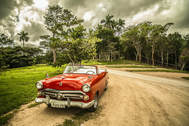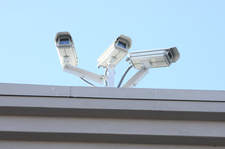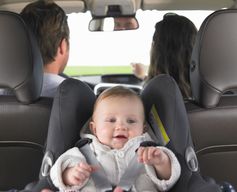Stage 1The first stage is a rear facing bucket seat for newborns weighing 4lbs and up. Bucket seats are designed to keep your baby reclined at a 45 degree angle to make it easier for them to breathe. A base is installed in the back seat of the car and the seat itself can be removed. Be sure to follow instructions for proper installations, and if you're not sure if the seat is properly secured, don't hesitate to check with a specialist. The height and weight limitations of bucket seats vary by manufacturer. While regulations vary from province to province, a good practice is to keep your child in a bucket seat until they weigh a minimum of 20lbs, are over 1 year old and can walk unassisted. Stage 2 At stage two it's typical to move up to a front facing seat with a 5 point harness that keeps your child sitting up properly while snugly strapped in. At this point regulations allow for front facing seats, however many manufacturers go above and beyond the recommendations and design seats that can be installed as front or rear facing. These are known as convertible seats and they make it possible to keep your child in a rear facing seat for longer. While rear facing seats are not mandatory, this design has been proven to reduce child injury and death, and kids as old as 6 can sit in them comfortably. Stage 3 The purpose of a booster seat is to allow older children to properly use the car seatbelt. Designed for older children, booster seats must still be installed in the back of your vehicles, away from the front airbags that can severely injure or kill a child. Some booster seats will have a full back to protect the neck and head and some will only have a cushion to boost the child so that the seatbelt can lie properly across their hips and shoulder. You should consider opting for the full back booster seat if the headrest in your vehicle cannot be adjusted to support your child's head. Stage 4At this stage, children can graduate to using a regular seat and seatbelt. To check if your child is ready, have them sit all the way back and clip in the seat belt. The belt must sit straight across the hips, and the shoulder strap must fit over the top of the shoulder, without touching the neck. Their knees should bend comfortably over the edge of the seat, and they shouldn't have to slide down to get comfortable. At every stage be mindful of the manufacturer's size and weight limitations and don't use the seat once your child outgrows it. Follow manufacturer's guidelines to ensure proper installation and safe restraint of your child's position in the seat.
2 Comments
 Written by Stephanie Fereiro; published to Economical Insurance April 13, 2017 When it comes to shopping for car insurance, there's a lot to think about - and everyone seems to have helpful advice and information to share. But how much of what you hear is actually true? Let us make things a little clearer by breaking down some of the most common myths about car insurance. 1. "Red cars cost more to insure than any other colour of vehicle." Contrary to popular belief, the colour of your car has no impact on your premium, so driving a red car does not mean you'll pay more for car insurance. There are several factors that go into determining your premium, including things like the make and model of your vehicle, your age, and where you live - but colour doesn't come into the equation. 2. "If my friend gets in an accident when he borrows my car, it won't affect my insurance record." Unfortunately, this isn't usually true. If you lend your car to a friend and they get in an accident, you insurance company will likely need to pick up the tab, and the claim will probably remain in your file. Accidents happen, and that's why you have car insurance - but remember, when you lend your car to a friend, you're lending them your insurance, too. 3. "Brand new cars are more expensive to insure than older cars because they're more likely to be stolen." Actually, when it comes to auto theft, the majority of the top 10 most frequently stolen vehicles in Canada in 2016 were at least 10 years old - so if your brand new car costs more to insure than your older car of the same make and model, it is likely because the new car would cost more to repair or replace in the event of a collision. 4. "My car insurance company will cover items stolen from my car." Your car insurance company is there to protect you, your passengers, and your vehicle when an accident happens - but it won't cover items that are stolen from inside your vehicle. The good news? Your home insurance or tenant insurance policy will likely have your back if your personal belongings are stolen from your car. 5. "Men always pay more for car insurance than women." The cost of your car insurance is impacted by several factors, including things like your age, your driving record, where you live, how far you drive to work, and your vehicle's make, model, and year - and each car insurance quote is tailored to the individual driver. While it's true that on average, men under the age of 25 generally pay more for car insurance than women of the same age (because they're statistically riskier drivers to insure, men don't always pay more for car insurance. When you're ready to shop for a car insurance provider, be sure to talk to a licensed broker. Your broker will do the homework for you, comparing products and prices across several insurers to find you the best coverage to suit your needs. They'll be happy to answer any questions you have along the way, too. Economical Exclusive: The pros and cons of company-monitored and self-monitored security systems7/5/2017 Written by Stephanie Fereiro; published to Economical Insurance March 28, 2017  There are several steps you can take to prevent break-ins before they happen, and installing a security system can take your efforts to the next level. Both company-monitored and self-monitored systems can enhance your home security and help deter or catch those unwelcome guests, so take a moment to understand the pros and cons of each before you sound the alarms. Company-monitored security systems Company-monitored security systems are installed and monitored by professional home security companies. They can include things like cameras, motion detector, door sensors, glass-break sensors, silent alarms, and not-so-silent sirens to scare off intruders. While each system is usually set up to send a signal to the company's call centre when someone enters your home while the system is engaged. Then, you'l receive a phone call to make sure the alarm wasn't set off accidentally. If you don't answer or if you aren't home when you receive the call, the police will be dispatched.
Self-monitored security systems Self-monitored security systems are exactly what they sound like - they're security systems you monitor yourself. These can include motion sensors, silent alarms, sirens, door sensors, and security cameras that send text or push notifications or call your mobile phone when they're set off - and most connect to smartphone apps that allow you to monitor them remotely and give access to neighbours or other emergency contacts. If you receive a notification when you're not home, you can call 911 yourself or have a neighbour look for signs of a break-and-enter. Some of these systems (like Nest Cam, for example) even come equipped with a speaker, so you can tell the burglars they've been caught on camera and police are on the way.
Picture your self-monitored system in action: You've headed up to your cottage for the week, and just as you get comfy in front of the campfire, your phone sounds an alert that someone is inside your house. You open your home security app and see footage of a stranger walking around your living room. You quickly call 911 and then watch as police come in and arrest the burglar on camera (and save your TV and stereo from being stolen in the process).
What about unmonitored alarm systems? While company- and self-monitored security systems both offer some way of monitoring your home while you're not there, unmonitored alarm systems are simply intended to scare off intruders as soon as they step foot in your home - but you'll have to rely on one of your neighbours to call the police if they hear the alarm. While an unmonitored alarm-only system can make quite a racket and scare off those pesky burglars, it's safe to say that some form of monitoring adds an extra layer of security, whether it's done professionally or you do it yourself. Did you know that installing a security system in your home could qualify you for a discount on home insurance? If you're thinking of installing a new home security system, reach out to your licensed broker to find out how much you could save. Your vehicle is a big investment. We protect it from physical damage, but you can do your part too.
1. Keep your vehicle locked at all times. If your vehicle is open, thieves have easy access to anything that may be in the vehicle. 2. Never leave the keys in the vehicle, even if you're warming it up in the winter. Leaving keys in an unattended vehicle makes it a target for thieves. Consider purchasing an auto-start system and keep it locked while in use. 3. Don't leave valuables in plain view. Leaving a laptop or large sums of cash in plain sight makes your vehicle a target for theft and vandalism. 4. Install an anti-theft device. There are many types of anti-theft devices. They can be steering wheel locks, hood locks, tire locks, electronic immobilizers, or kill switches. 5. Park in a garage or well-lit area. Well-lit areas provide more opportunity for thieves to be noticed and caught. Garages can be locked and add a second layer of security. 6. If they can't drive it, they can't steal it: Manual Transmission Theory. Less and less people are learning to drive manual transmissions every year. If a thief can't drive a standard, they can't steal your car. 7. Close the windows. It's very easy to steal something from a vehicle with the windows down. Even having the windows down a little bit can give a thief the opportunity to reach in and unlock the door. 8. Park with your wheels turned to the curb. Rather than breaking and entering, some thieves might choose to tow your vehicle away. If you park with the wheels turned towards the curb, the vehicle is much harder to tow.  Welcome to our new insurance agency blog! This is our very first post. We're not quite sure what we're going to write about here, but the plan is to create helpful content for customers and prospective clients about information that is relevant to you. We hope you'll come to view this as a top resource for keeping your family and your finances safe. Here are a few of the topics we may be writing about:
Stay Tuned! |
Contact Us(506) 466-3330 Archives
April 2021
Categories
All
|
Navigation |
Connect With UsShare This Page |
Contact UsDay Insurance
78 Milltown Blvd. St. Stephen, New Brunswick E3L 1G6 (506) 466-3330 Click Here to Email Us |
Location |
Website by InsuranceSplash



 RSS Feed
RSS Feed